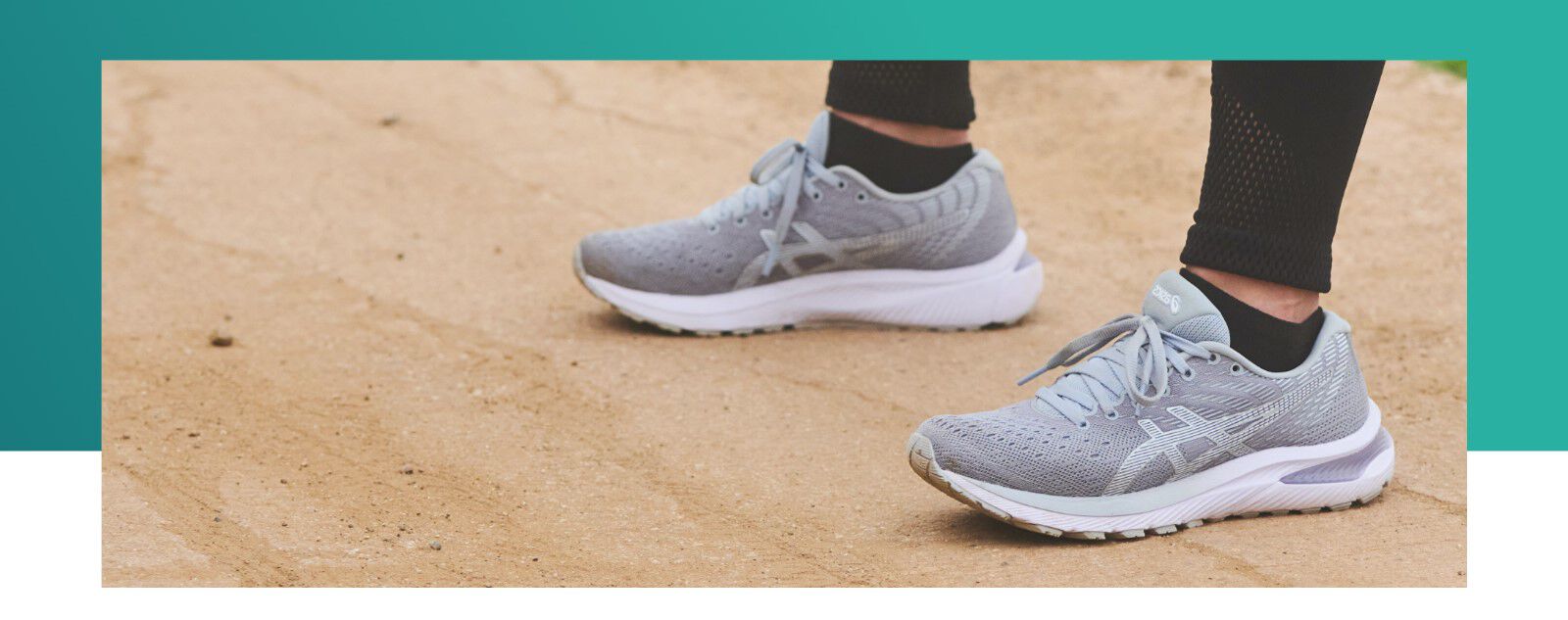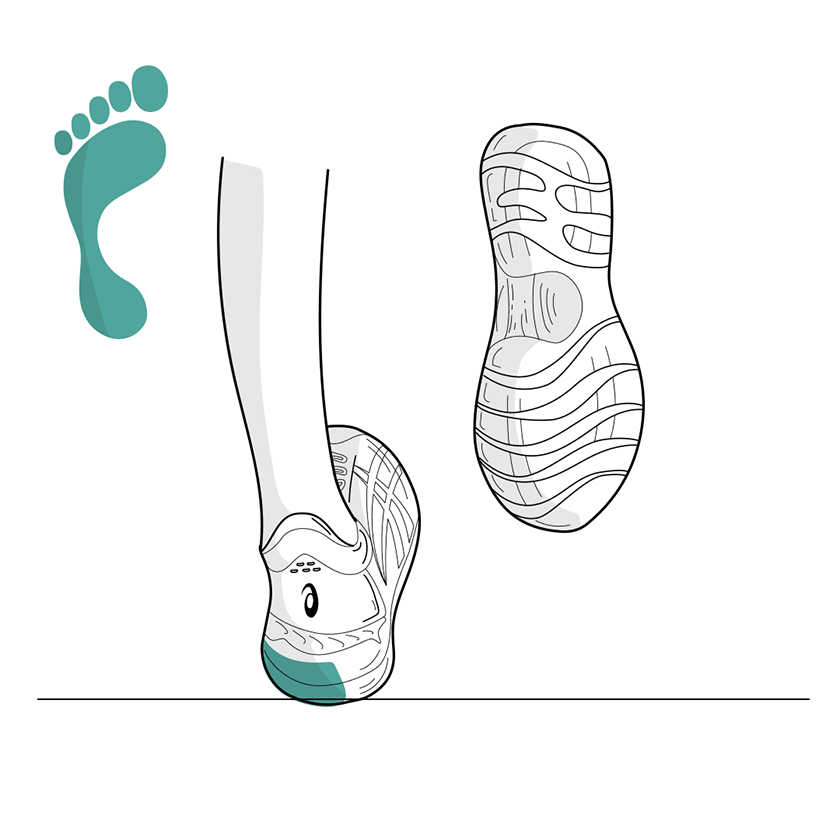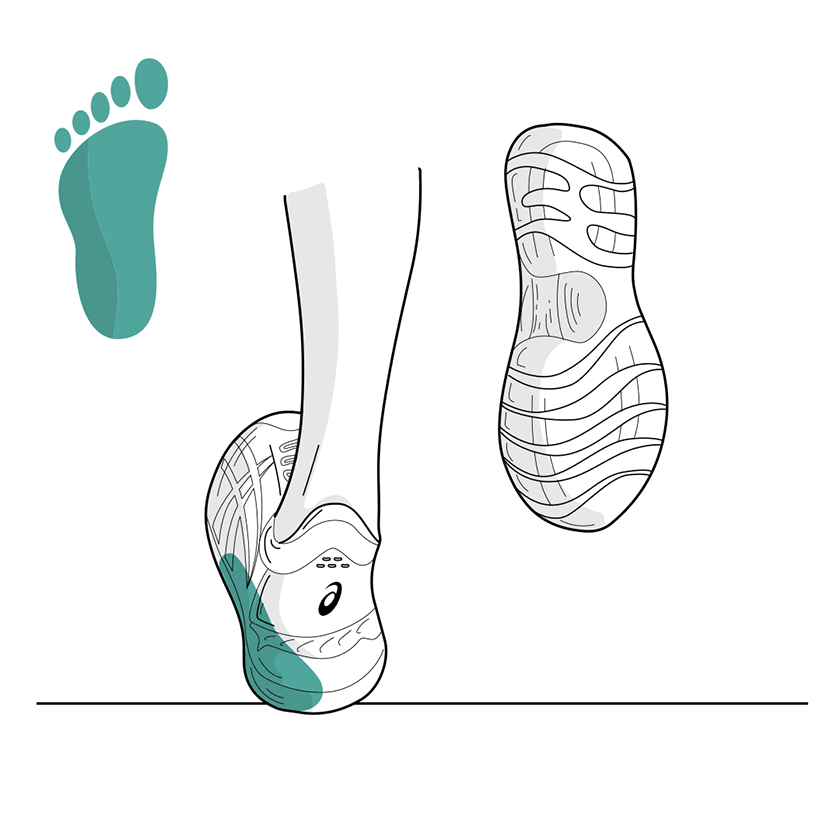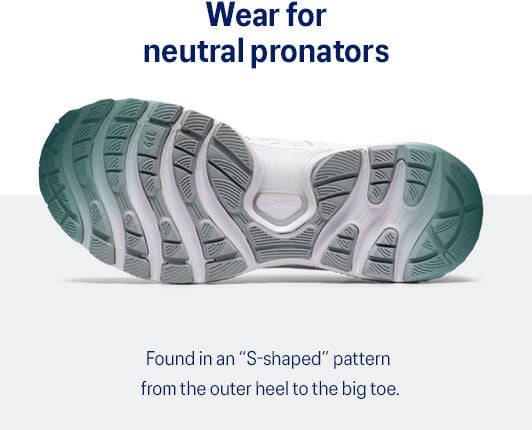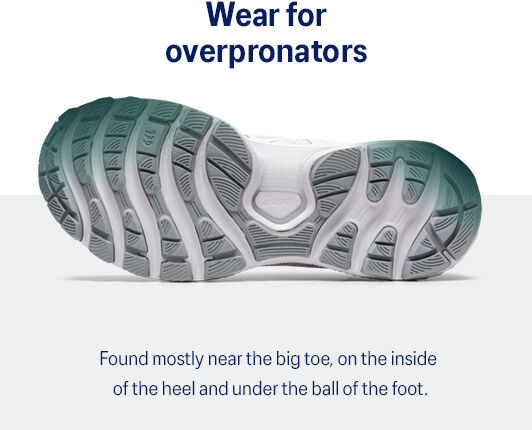Research shows that around 4 in 5 runners risk injury in shoes that don’t suit their running style. Understanding how your feet move and land will help you find shoes with the right type of support for you.
Supinator
The outer side of the heel hits the ground at an increased angle with little or no inward rolling (pronation), causing a large transmission of shock through the lower leg.
Push Off: pressure on smaller toes on the outside of the foot.
Injuries: plantar fasciitis, shin splints, ankle strain.
Foot type: high arches.
Neutral
The foot lands on the outside of the heel, then rolls inward (pronates) to absorb shock and support body weight.
Push Off: even distribution from the front of the foot.
Injuries: less likely due to effective shock absorption, but neutral runners are not immune to injury.
Foot Type: normal-size arches.
Overpronators
The foot lands on outside of heel, then rolls inward (pronates) excessively, transferring weight to inner edge instead of ball of the foot.
Push Off: big toe and second toe do majority of the work.
Injuries: shin splints, plantar fasciitis, bunions, heel spurs.
Foot Type: low arches or flat feet.
Wear for supinators: Mostly on the outside edge of the shoe.
Wear for neutral pronators: Found in an “S-shaped” pattern from the outer heel to the big toe.
Wear for overpronators: Found mostly near the big toe, on the inside of the heel and under the ball of the foot.
How to determine your pronation type
The best way of learning more about your foot type is through gait analysis, where video footage of your run is analyzed by an expert. Wear patterns won't provide the full picture, but they can give clues about the impact of your running style.
This can give you an idea of where you may need extra support and cushioning in your running shoes.



